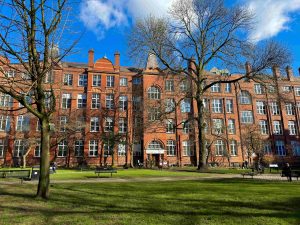Planners reluctantly back Salford magistrates scheme

PLANNING officers in Salford are recommending the city’s old magistrates’ court is converted into 122 flats despite their size breaching planning guidance.
The court, just off Chapel Street, closed in December 2011 after 171 years. All cases have now been transferred to Manchester Magistrates’ Court.
Liverpool-based X1 Developments want to develop six two-bed flats and 116 with one bedroom, ranging in size from 264-610 sq ft.
A report prepared ahead of the planning committee meeting on December 5 refers to housing planning guidance which recommends new developments in the Chapel Street area have two or three bedrooms with a floorspace of at least 610 sq ft. The authority wants a mix of housing to attract more families into the city.
Despite this, planning officers say they have “reluctantly” accepted the proposals because there has been no other interest in the building.
The report said: “The developer has submitted a viability statement and has stated that the costs of renovating and converting an old listed building require a level of return that can only be generated by the provision of a high proportion of one bedroom dwellings.
“With reluctance it is considered that the applicant makes a valid argument with regard to the size of the apartments
and that requiring a greater proportion of two-bedroom properties would risk the viability of the development and
therefore the successful reuse of this important listed building.”
X1 has also been let off a section 106 payment, usually paid by a developer for infrastructure works and public realm improvements, because there is “insufficient profit” in the development. However, it has agreed to contribute £50,000 to gas lamps and the reinstatement of a roll of honour.
The report added: “The reuse of this important listed building that sits in a prominent position on Bexley Square is welcomed. The disappointing mix and size of apartments is considered acceptable in this particular instance as it is considered that greater weight in the planning balance should be given to the retention, refurbishment and reuse of this important listed building.”
The Grade II-listed building was constructed in 1825 as the old town hall and became a court in 1840.








